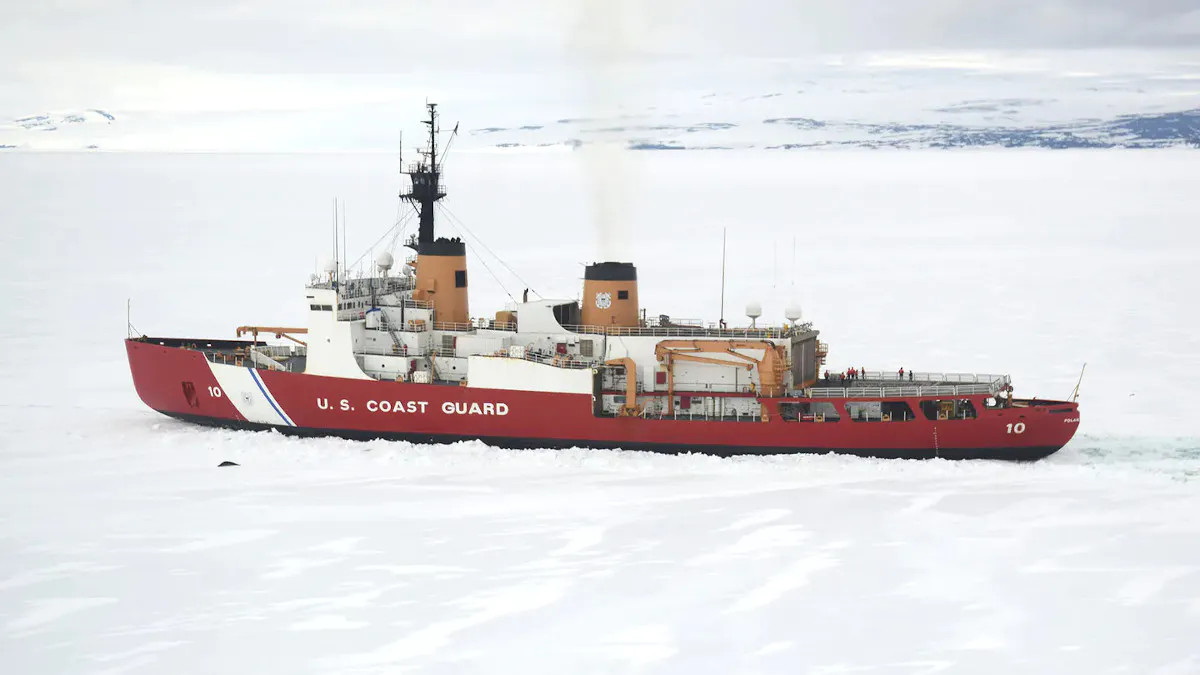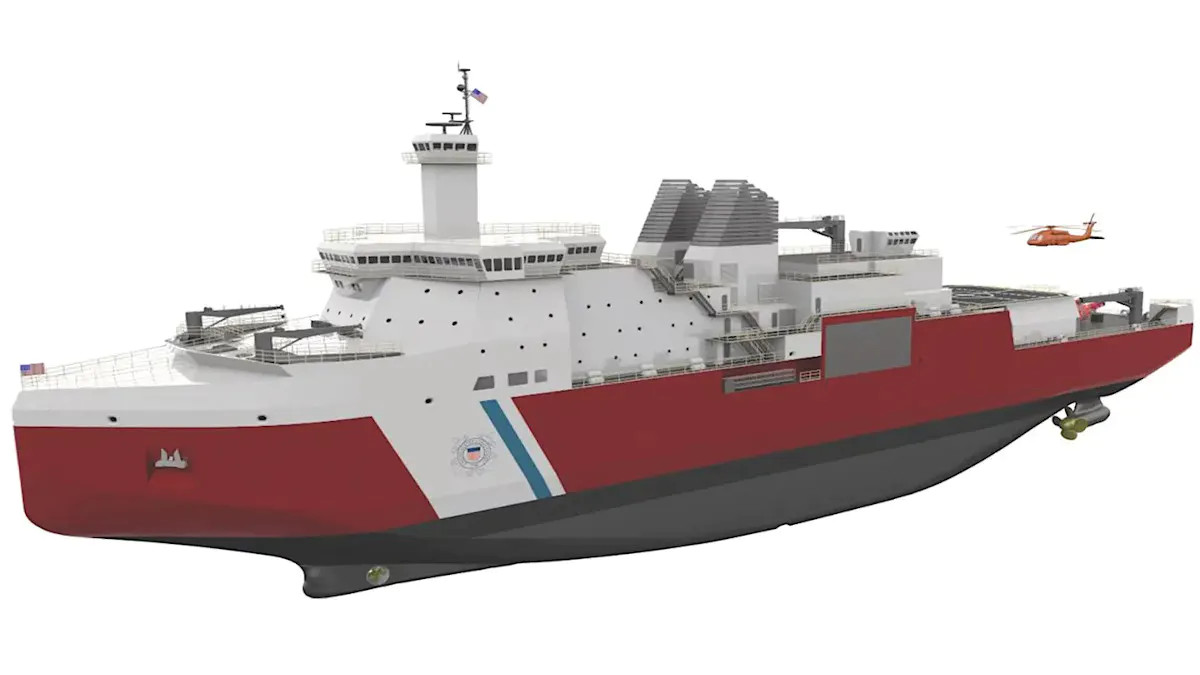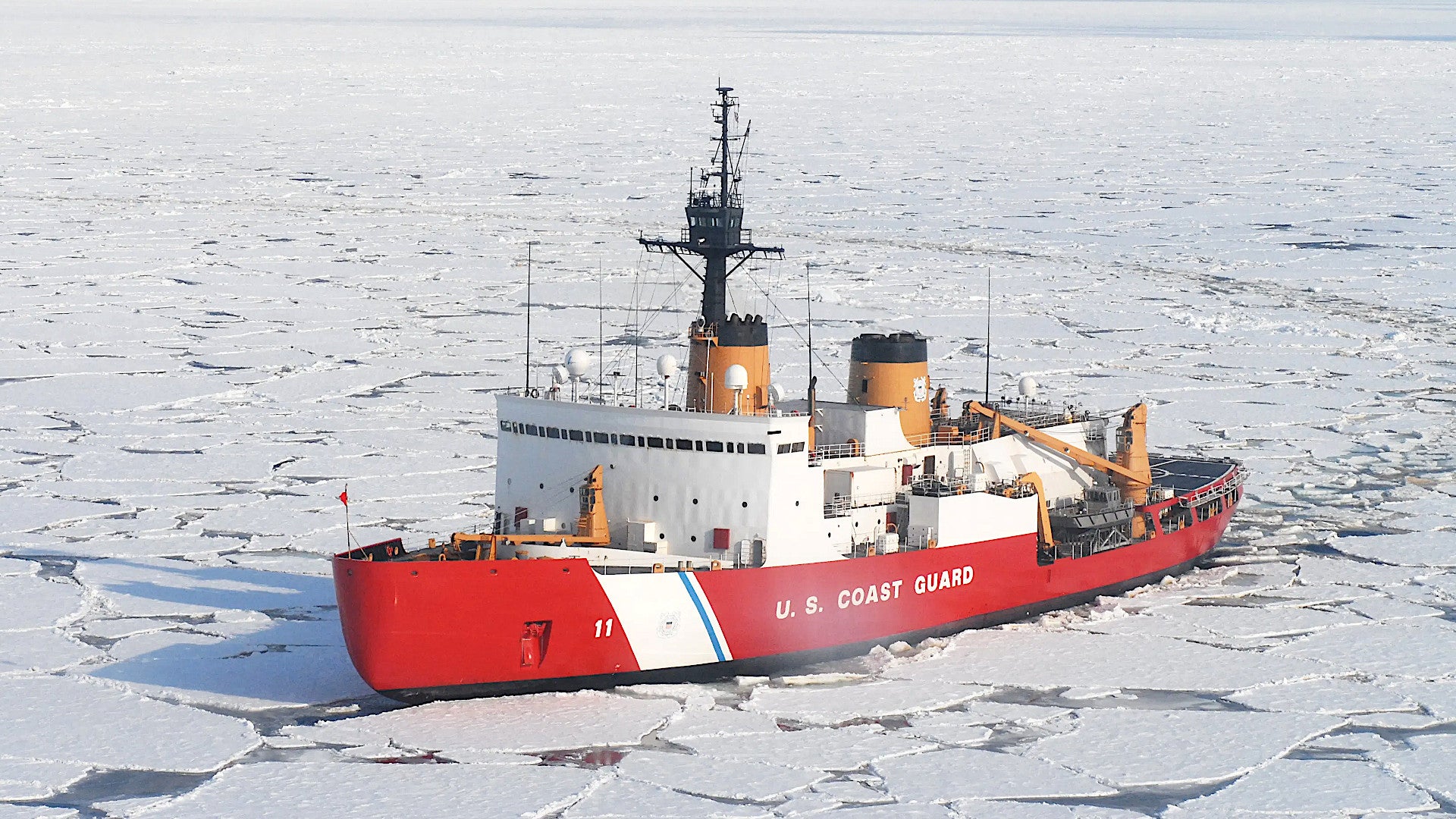U.S. President Donald Trump says his Administration is working to secure 10 icebreakers for the U.S. Coast Guard. He also claimed that these ships would be cheaper to acquire than that service’s future Polar Security Cutters, a new class of heavy icebreakers, the first of which is now under construction. This comes just over a month after Trump ordered the Coast Guard to review its existing icebreaker plans and to look into the possibility of buying or leasing additional ice-capable ships, including nuclear-powered types.
Trump made these comments in a speech during a visit to U.S. Southern Command’s headquarters in Doral, Florida, just outside Miami, on July 10, 2020. You can watch his full remarks in the video in the Tweet below. The icebreaker-specific portion begins at around 6:00 in the runtime.
“We’ve approved the two new state-of-the-art National Security Cutters and two Polar Security Cutters for the United States Coast Guard,” Trump said. “We have under construction right now the largest icebreaker in the world and we’re going to be trying to get, if we can, an extra 10 icebreakers.”
“We only have one. Russia has 40. We have one,” he continued. “So, we will have two, but we think we’ll have 10.”
At present, the U.S. Coast Guard actually has two operational icebreakers, the heavy icebreaker USCGC Polar Star and the medium icebreaker USCGC Healy. Polar Star‘s sister ship Polar Sea remains in the service’s inventory, but in an inactive state, primarily as a source of spare parts. The Polar Star is aging and has been increasingly prone to serious breakdowns in recent years. Healy, while newer, is still over 20 years old now and is also simply smaller and less capable when it comes to busting through thick ice on the water.

In April 2019, the U.S. Navy announced that it had hired VT Halter Marine, on behalf of the Coast Guard, to build the first new Polar Security Cutter. The initial contract was valued at nearly $746 million. The ship is expected to have a displacement of around 33,000 tons with a full load. This is roughly the same displacement as Russia’s future nuclear-powered Project 22220 icebreakers, the first three of which are now in the final stages of construction. The Polar Security Cutters are set to be some of, if not the largest conventionally-powered icebreakers in the world.

The Russian government intends to build at least five Project 22220 icebreakers and has other ice-capable ships under construction, as well. At present, it does have around 40 icebreakers in service and in the works, in total. The disparity between the size of the Kremlin’s icebreaking fleets and those of the Coast Guard has become an increasingly pronounced issue for the U.S. government in recent years, especially as geopolitical competition in the Arctic region has grown.

Even with 10 more icebreakers, the United States would trail significantly behind Russia in total fleet size. Still, it would represent a huge increase in American icebreaking capacity compared to what the Coast Guard has now.
Trump did not say specifically where the U.S. government would acquire these additional icebreakers from and whether it would do so through an outright purchase or some other type of arrangement, such as a lease deal. “We’re trying to do a deal with a certain place that has a lot of icebreakers and we’re seeing if we can make a really good deal where you can have them very fast,” the President said cryptically.
“We’re working on it and I think we can surprise you at a very good price, which will be nice,” he continued. “Much cheaper than the one we’re building and that’s also nice.”
This would all seem to indicate Trump is talking about the potential to buy or lease existing ships. This was something that the President alluded to in his Arctic memorandum, which focused heavily on icebreaking, in June.
“In anticipation of the USCGC Polar Star‘s operational degradation from Fiscal Years 2022-2029, an analysis to identify executable options, with associated costs, to bridge the gap of available vessels as early as Fiscal Year 2022 until the new PSCs required to meet the objectives of this memorandum are operational, including identifying executable, priced leasing options, both foreign and domestic,” the memo explained. “This analysis shall specifically include operational risk associated with using a leased vessel as compared to a purchased vessel to conduct specified missions set forth in this memorandum.”
It’s unclear, though, where this many existing icebreakers could be sourced from quickly. No other single country, except Russia, operates 10 icebreakers, in total, which the Coast Guard would consider suitable for independent Arctic operations.

Certain friendly countries, most notably Finland, do have shipyards with significant expertise in building ice-breakers and other ice-capable ships, but having any new ships built, even abroad at yards with applicable designs already in production, would still take time. The Coast Guard already sought to keep costs as low as possible and simplify construction as much as possible with regards to its new Polar Security Cutters by choosing a relatively mature design derived from that of a ship, the Polarstern II, for in Germany. The future of that German icebreaker program is uncertain after the cancellation of the formal tender earlier this year due to legal issues.
There is also a possibility that Trump may have misspoken, at least in part. The Coast Guard’s existing plans, at least as they are known publicly, call for a fleet of three new heavy icebreakers and three new medium icebreakers. The plan could be to increase the overall size of the service’s future icebreaking fleets to 10 ships, which would only take the addition of four more vessels, either via new production or a lease arrangement.
Trump’s Arctic security memo, which he issued on June 9, gave the Coast Guard 60 days to submit its full report on its icebreaker plans to the White House, by way of the Departement of Homeland Security. This means the review should be completed by the first week of August.
So, we may find out more specific details about the future of America’s icebreaking fleets, and the “certain place” that additional ships might come from, soon.
UPDATE:
It has been brought to our attention VT Halter Marine corrected its initial press release regarding the displacement of the new Polar Security Cutter, downgrading it from 33,000 tons to 22,900 tons, making it clearly smaller, by this metric, to Russia’s Project 22220 design.
Contact the author: Joe@thedrive.com
